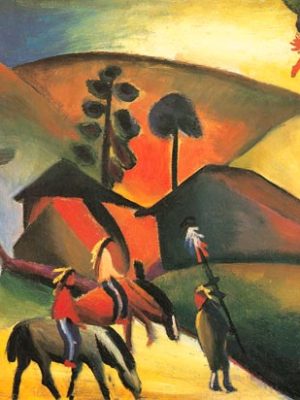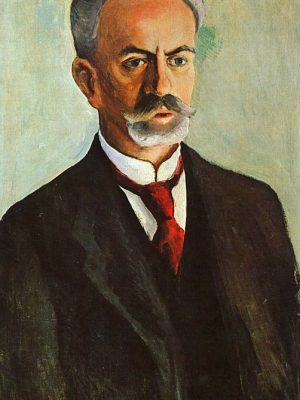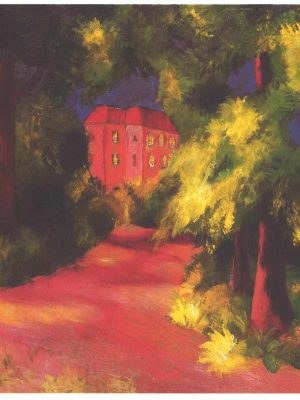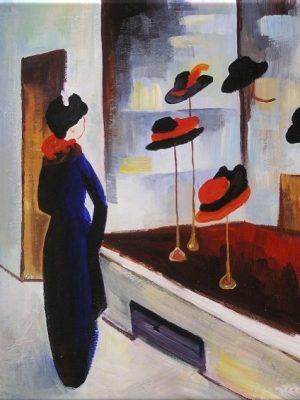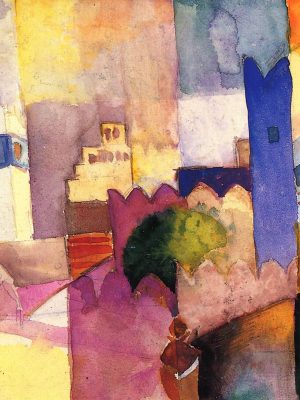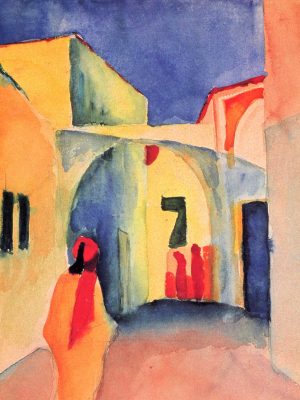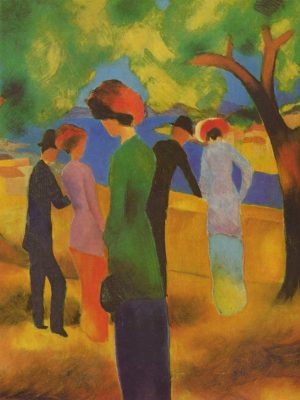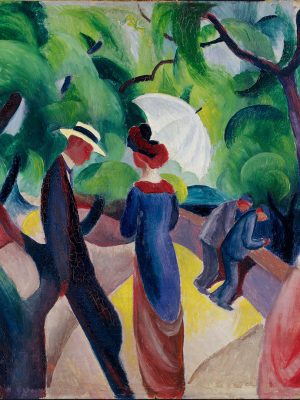August Macke was a German Expressionist painter who is known for his vibrant use of color and his interest in the modern urban landscape. He was born on January 3, 1887, in Meschede, Germany, and died on September 26, 1914, in Champagne, France, during World War I.
Macke’s work was heavily influenced by the Fauvist movement, particularly the work of Henri Matisse, and he was known for his use of bright, bold colors to create works that were both decorative and emotional. He was also interested in exploring the relationship between color and form, and his work often features simplified forms and flattened perspectives.
One of Macke’s most famous works is his painting “Lady in a Green Jacket,” which depicts a woman in a bright green jacket surrounded by colorful flowers. The painting is notable for its use of color and its sense of joyful energy.
Despite his short career, Macke’s work had a significant impact on the development of Expressionism in Germany, and he remains an important figure in the history of modern art. His works can be seen in museums and galleries throughout the world, and his influence can be felt in the work of many contemporary artists.
